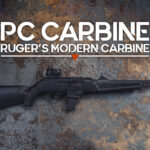
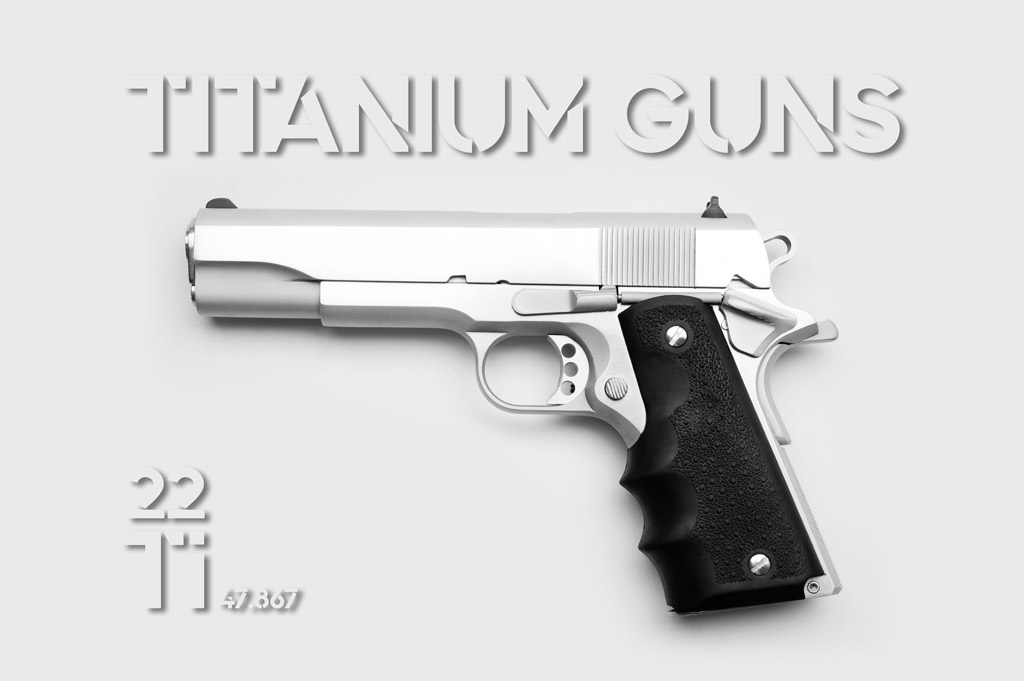
Titanium is a strong, lustrous, corrosion-resistant transition metal with a silver color. It’s often used in the aerospace industry due to its ability to withstand extreme temperatures. Because of its excellent strength-to-weight ratio, this metal has become part of numerous everyday items such as bicycles, golf clubs, and even mobile phones. So why don’t we see titanium guns in every gunshop?
This sturdy metal gets mixed reviews in the firearms industry. Although aerospace and bicycle components lend themselves well to this much-hyped material, gun manufacturers are less enthusiastic. Let’s delve into this polarizing metal, examine its pros and cons, and discover why gunmakers do not wholly embrace titanium firearms and parts.
What Is Titanium?
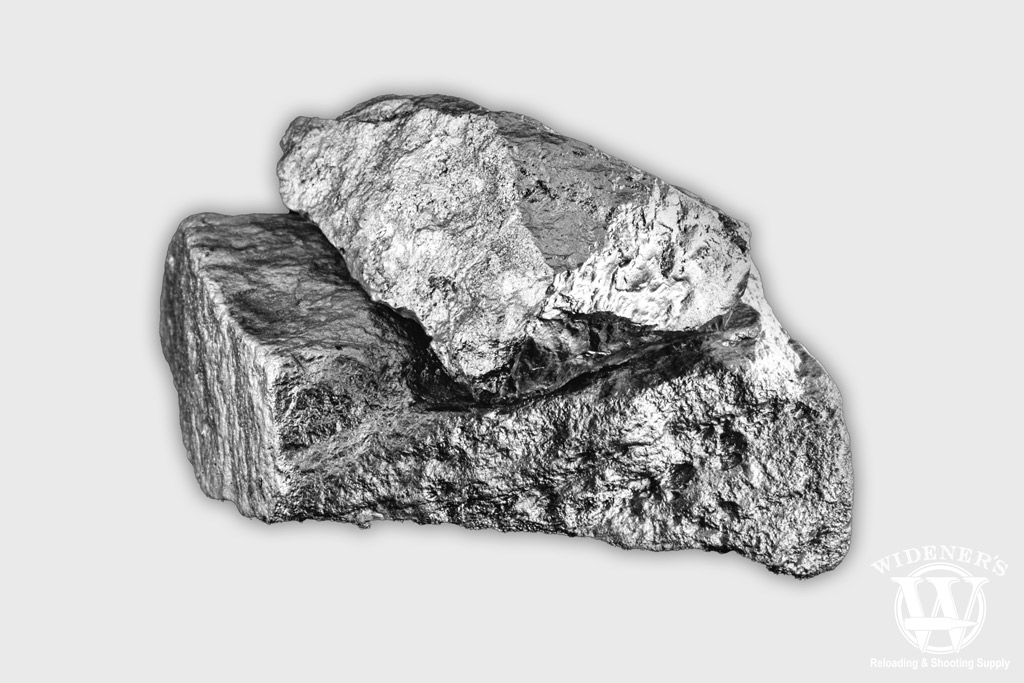
Raw titanium is a chemical element known for being lightweight, strong, and less dense.
Titanium (Ti) is a chemical element known for its high strength, and low density. Discovered in the late 18th century, titanium was named after the Titans of Greek mythology, reflecting its immense power.
Titanium is renowned for being solid yet light. It’s about as strong as steel yet 45% lighter, and it’s twice as strong as aluminum while only being 60% heavier. These attributes make it a material of choice in industries where lightness and strength are essential, particularly aerospace.
Another notable feature of titanium is its exceptional corrosion resistance. It performs well in ocean water, aqua regia, and chlorine, making it ideal for use in the marine industry and chemical processing.
Titanium is also biocompatible, meaning it’s non-toxic and not rejected by the body. This attribute makes it excellent for medical applications, such as surgical implants and dental crowns.
How Does Using A Titanium Nitride (TiN) Coating On Gun Parts Improve Them?
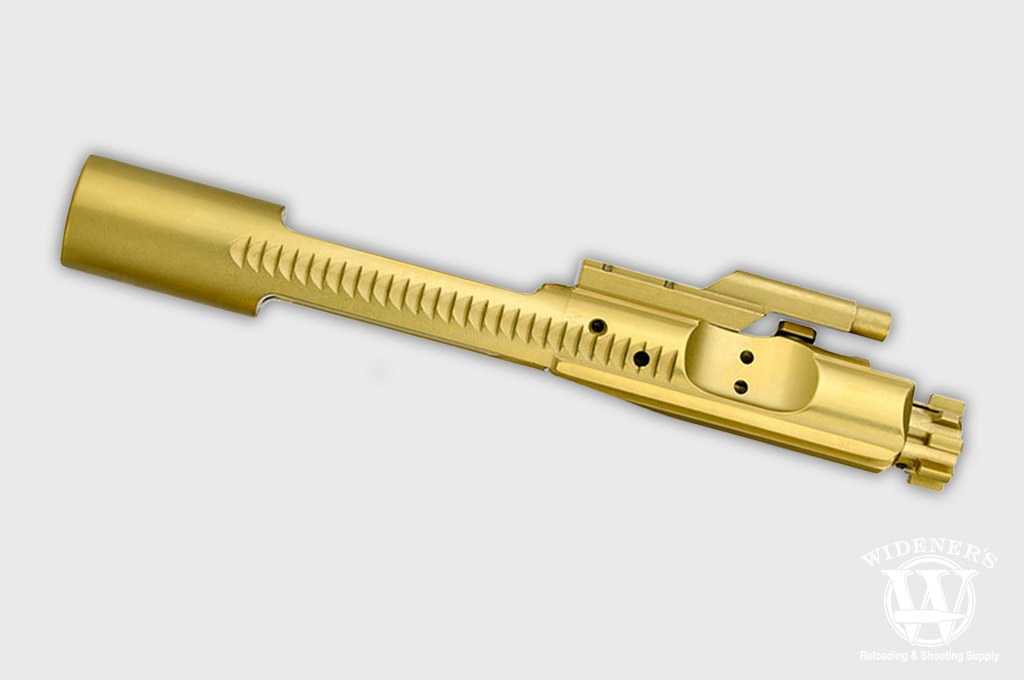
Titanium nitride coatings on gun parts increase their longevity and improve performance.
Titanium nitride coating significantly enhances the performance and longevity of firearm components manufactured using titanium. The TiN coating has an exceptional hardness, which reduces wear and tear on the gun parts, especially in high-friction areas.
It provides an excellent surface finish, reducing the need for lubrication and making the firearm more straightforward to clean. Additionally, a TiN coating is highly corrosion-resistant, thus improving the durability of titanium firearms. This coating adds a unique gold aesthetic, making the gun functional and visually appealing.
Pros & Cons: Titanium Guns Manufacturing
Despite its advantages in several industries, titanium has drawbacks preventing it from being universally accepted in firearms production.
Titanium, a robust and lightweight metal, has been considered for gun manufacturing due to its unique properties. Its benefits include:
- Lightweight: Titanium is significantly lighter than traditional materials used in gun manufacturing, such as steel. This weight reduction can make firearms easier to handle and decrease user fatigue.
- Strength: Despite its lightness, titanium is solid. Its strength-to-weight ratio surpasses that of many metals, potentially offering increased longevity and durability for firearms.
- Corrosion Resistance: Titanium has superior corrosion resistance. Even when exposed to harsh environments or salty conditions, it doesn’t rust or degrade, enhancing the lifespan of the firearm.
- High Melting Point: The high melting point of titanium offers excellent heat resistance, a critical factor considering the heat generated during firearm discharge.
However, this metal also presents certain drawbacks:
- Cost: Titanium is more expensive to obtain and process than traditional gun-making materials. This higher cost can be passed onto consumers, making titanium firearms more of a premium or luxury item.
- Machining Difficulty: Titanium is notoriously difficult to machine and requires specialized knowledge and experience, increasing the manufacturing costs and complexity.
- Brittleness: Titanium is strong but can be brittle under specific conditions. Titanium’s brittleness could lead to a gun’s catastrophic failure, increasing the risk to the user.
Titanium promises innovations in firearms manufacturing with its weight, strength, and corrosion resistance. Still, its high cost, manufacturing complexities, and potential brittleness are problems.
Which Guns Have Titanium Parts?
Firearms manufacturers often utilize titanium, known for its remarkable strength, lightness, and corrosion resistance. Despite its shortcomings in other areas, titanium stands apart from other metals when enhancing durability without adding unnecessary weight.
Here’s an exclusive list of ten top-tier guns incorporating titanium components. They deliver a unique blend of reliability, performance, and aesthetics:
- Glock 19 Gen 4 uses a titanium nitride (TiN) coated barrel for improved durability and friction resistance.
- Sig Sauer P220 features titanium parts in the trigger and hammer for enhanced strength and lighter weight.
- Smith & Wesson M&P Shield employs a titanium firing pin for its improved strength-to-weight ratio.
- Beretta 92FS utilizes a titanium guide rod for reduced weight and increased durability.
- Taurus Model 85 incorporates a titanium cylinder to reduce the gun’s weight.
- Ruger LCP II utilizes a titanium firing pin for better impact strength.
- Wilson Combat CQB uses a titanium frame for improved durability and lighter weight.
- Smith & Wesson 340 PD features a titanium alloy cylinder for lighter weight and high corrosion resistance.
- Colt Python employs a titanium trigger for reduced trigger pull and improved responsiveness.
- Springfield Armory XD(M) incorporates a titanium nitride (TiN) coated barrel for increased hardness and heat resistance.
Final Thoughts: Titanium Firearms Components
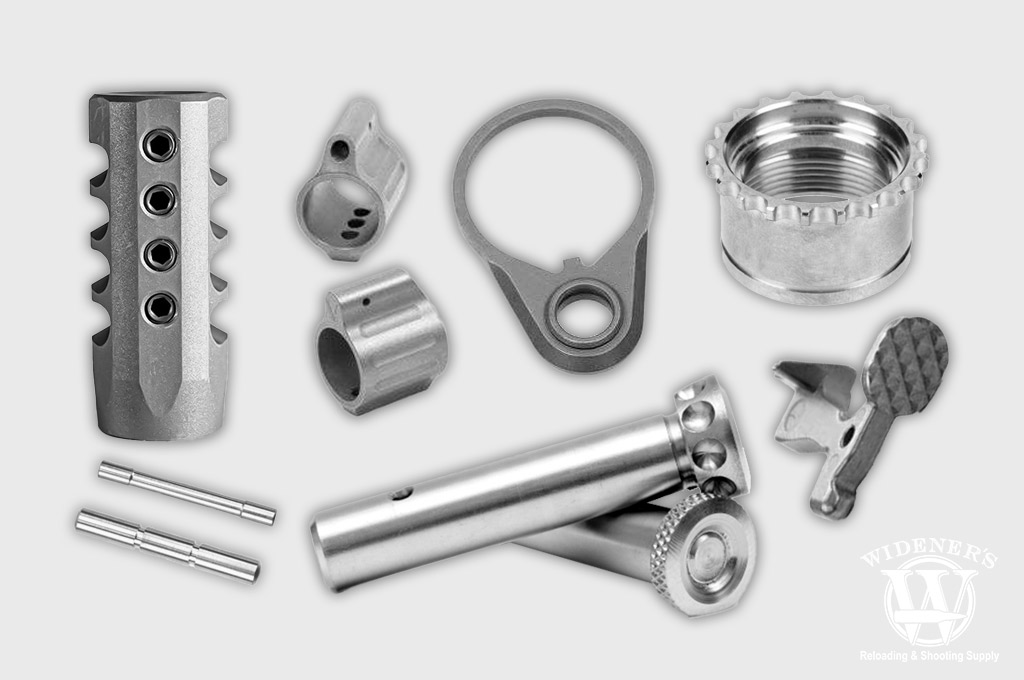
Titanium isn’t the best option for all gun components, however, it offers many manufacturing benefits.
The future of titanium firearms looks promising because it presents compelling benefits for gun manufacturing. This metal is strong, resilient, lightweight, corrosion resistant, and offers a high melting point. As manufacturers seek to produce lighter, more robust, and reliable weapons, titanium becomes increasingly appealing. Moreover, titanium’s heat resistance allows firearms to maintain performance even under extreme conditions.
Still, these benefits come at a price. Titanium costs more than traditional materials like steel and aluminum, potentially making firearms more expensive. Additionally, machining titanium can be challenging due to its toughness, which could increase manufacturing time and costs. These cost and machining difficulties remain potential obstacles. Using titanium in guns is a matter of weighing these pros and cons, striking a balance between performance, durability, and cost-effectiveness.
As technologies advance and cost-effectiveness improves, it’s reasonable to expect an increase in the use of titanium in firearm production. Be sure to also check out the world’s most powerful handguns at this link.


